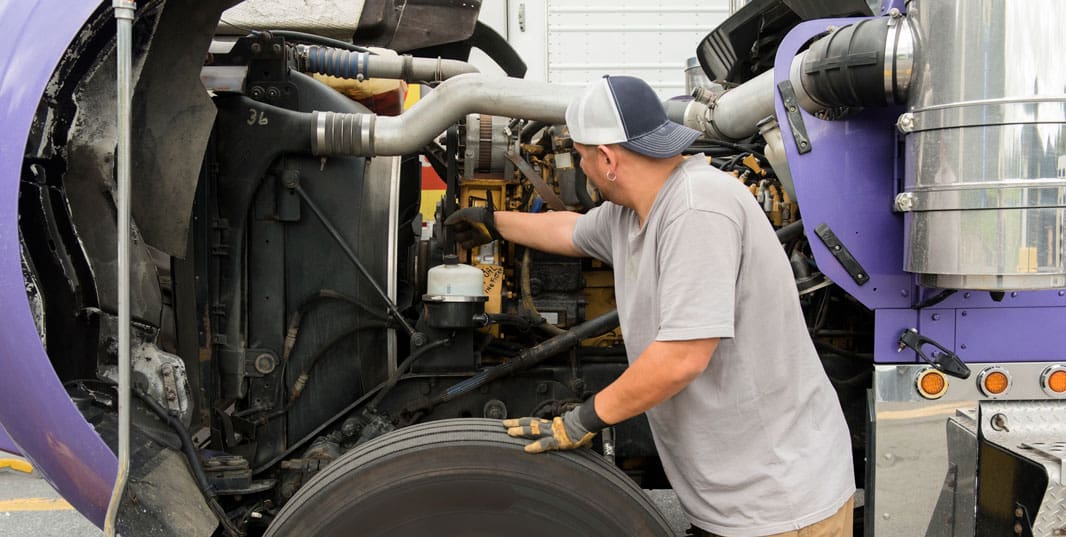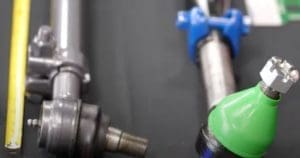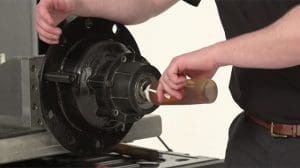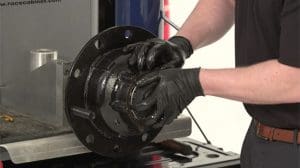Protect Your Fleet’s Performance from the Inside Out
After a long winter on the road, it’s time to give your fleet the attention it deserves. From harsh road chemicals to frigid temperatures, cold-weather driving can take a toll on your vehicles and their components. Spring is the perfect opportunity to roll out a comprehensive preventive maintenance strategy. Not only will this help your trucks recover from winter’s wear and tear, but it will also help to get ahead of any issues before the summer heat adds another layer of stress.
Below, we’ve outlined a few key seasonal maintenance steps that should be a part of any commercial vehicle fleet’s spring service routine.
Winter Recovery: Key Areas to Inspect After Cold-Weather Driving
Winter road conditions introduce a wide range of hazards to your tractor trailers. From corrosive de-icing agents to potholes and general cold temperature-related wear, it’s good practice to focus your attention on these key areas:
- Wheel End and Bearings
Exposure to road salt and slush can slowly degrade seals and allow contaminants into the hub. As part of your spring maintenance routine, you should inspect wheel bearing seals for clear signs of wear, including any cracking or seepage. Damaged seals can lead to lubrication loss and contamination, both of which shorten wheel end component life.*Look for discoloration or residue around the seal lip. If in doubt, remove the hub cap and inspect the lubricant for any red flags like moisture or metal particles.
-
Brakes and Pads
Moisture and salt buildup can also compromise brake performance. Brakes and brake pads should be closely examined for uneven wear, signs of corrosion, or poor performance. -
Steering and Undercarriage
Winter driving introduces more shock and stress to your steering system and truck’s underbody. Closely examine the steering components for signs of wear, damage, or looseness that could affect vehicle handling or control.
Prepping for Warmer Months: Keep Drivers Clean, Cool, and Comfortable
With warmer temperatures on the way, your vehicle maintenance routine should also shift toward inspecting and fine-tuning cooling systems, airflow, and driver comfort.
- A/C & HVAC Systems
Before the summer heat kicks in, test and service the A/C system. This includes checking refrigerant levels, compressor condition and operation, and ensuring the blower motor is functioning properly. Dirty or clogged filters can reduce airflow and strain the system. -
Engine Bay Spring Cleaning
Dust, road grime, and oil buildup can hide potential issues like hose cracks or leaks. Knowing how to clean the engine bay safely helps to prevent any electrical issues and overheating. Using a degreaser and low-pressure rinse will get the job done, just be careful to avoid direct contact with sensitive connectors and electronics.*While cleaning, take time to inspect belts, coolant hoses, and the radiator for signs of corrosion, stress, or contaminate buildup.
- Cab Refresh
A clean cab can reduce allergens and create a healthier, more enjoyable space for your drivers. Clear out clutter, replace air filters, and wipe down high-touch surfaces to help keep your drivers alert and comfortable.
DOT Inspection Prep: Stay Ahead of the Curve
Lastly, spring is also a great time to prepare for roadside inspections. DOT inspection activity ramps up during the warmer months, so now’s the time to check your overall compliance readiness.
Run through a complete DOT inspection checklist, including lighting, braking systems, tires, reflective tape, and freight tie-downs. Don’t forget to check mirrors, windshield wipers, horn functionality, emergency equipment, and that your cab is free of any obstructions. Make sure all records and logs are up to date and easily accessible.
Use your maintenance schedule to align these inspections with routine service intervals for better efficiency.
It’s About More Than Spring Cleaning
Spring maintenance is about more than just a good cleaning, it’s an essential part of any effective fleet preventive maintenance strategy. By prioritizing wheel ends, brakes, HVAC systems, and steering/undercarriage checks, technicians can prepare their fleets for safer operations and fewer in-season breakdowns.
To learn more about other tips and products that can help streamline your fleet, be sure to explore our other Wheelhouse Blogs.







